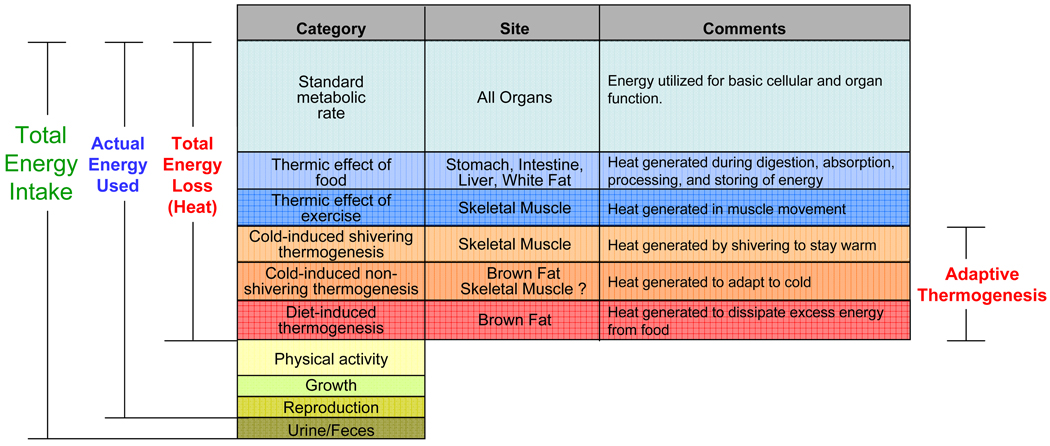Figure 1. Cellular energy utilization.
Of the nutrient energy intake of an individual organism, a small portion is lost in the feces and urine; a portion is used for physiological needs, such as growth, pregnancy, or lactation; a variable portion is used in physical activity; while the majority of ingested calories is used for metabolic processes or is lost in the production of heat. Based on the function and tissues of heat production, thermogenesis can be further classified into six categories. Adaptive thermogenesis is defined as regulated heat production in response to environmental temperature or diet. There are three subcategories of adaptive thermogenesis. Cold exposure induces shivering thermogenesis in skeletal muscle, and non-shivering thermogenesis in brown fat. While current evidence does not indicate a role of muscle in non-shivering thermogenesis, indirect evidence suggests that such mechanisms may exist. Overfeeding triggers diet-induced thermogenesis; this is also a function of brown fat.

